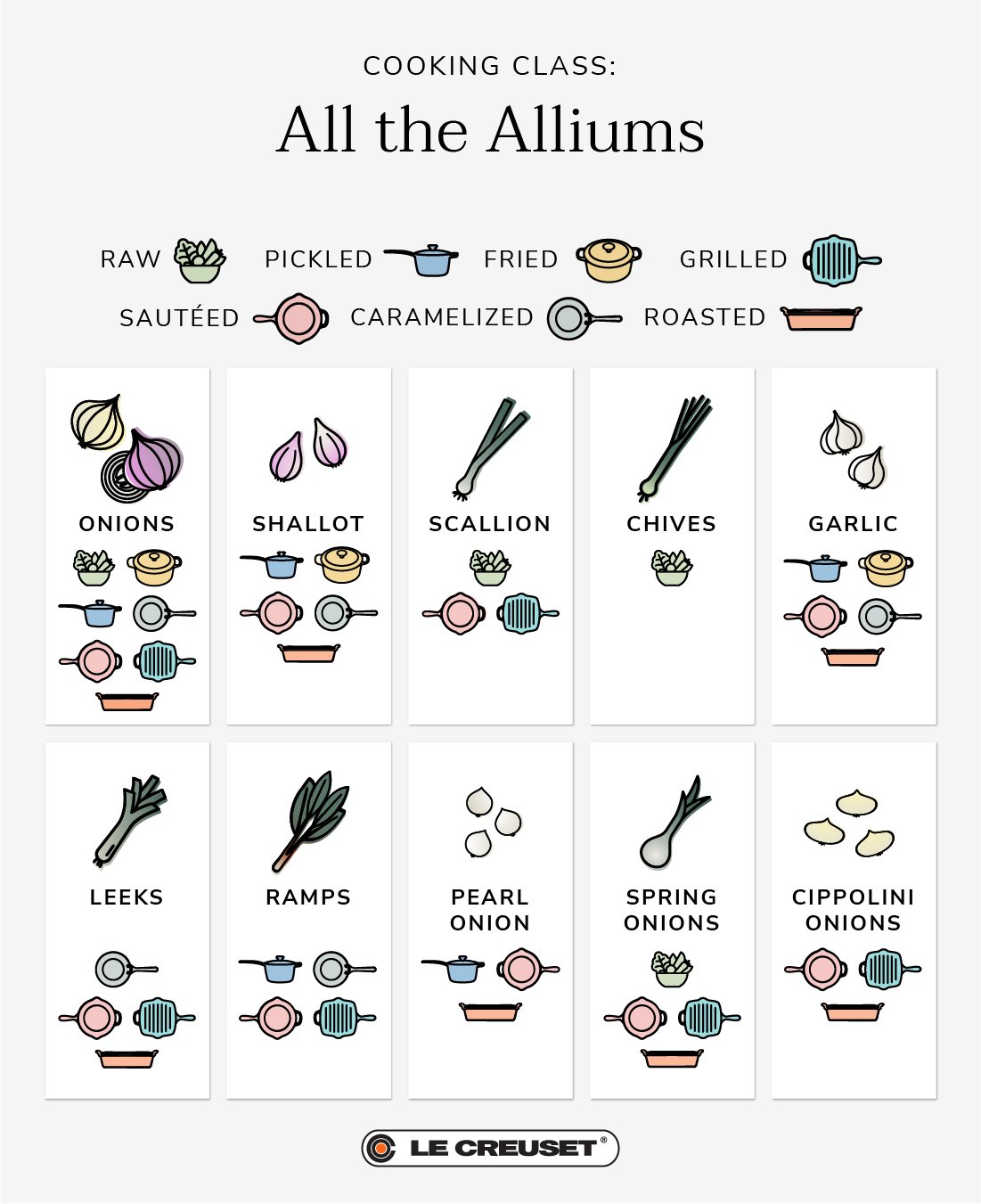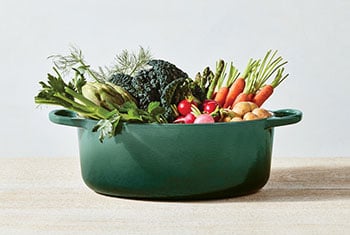Prized throughout history for their medicinal properties, alliums are now chiefly used in the kitchen as flavor powerhouses. Whether cooked into a slow-simmering stew or sprinkled raw as a bright garnish, this pungent family of vegetables is arguably one of the most important elements in the kitchen. As a supporting player, onions, garlic and the rest of the edible members of the family are crucial to lending their savory and sweet properties to everything from salads and soups to braises and stir-fries. But they also come into their own as the starring ingredient, whether caramelized for French onion soup or roasted into a savory tart.
While there are hundreds of plants under the genus allium, there are just a handful of edible species that regularly show up in the kitchen. Onions, shallots, scallions, chives, leeks and garlic are all cultivated year round and sold in almost every market, whereas cult-favorite ramps are harvested seasonally in the wild. Whether alone or in combination with other members of the family, this savory kitchen staple is as versatile as it is delicious. Here are a myriad of ways that you can prepare these multifaceted vegetables.
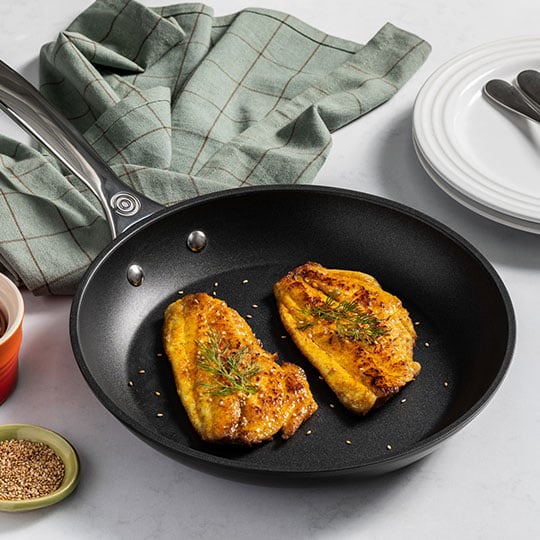
Raw and Pickled
Sharp, pungent and even a bit spicy when untouched by heat, raw alliums add a punch of flavor and color to a finished dish. Thinly sliced chives, scallions and spring onions are delicious as integral parts of a fresh salad as well as the perfect garnishes to finish a cooked recipe. Want the flavor of raw alliums without the bite? Pickling is a great way to add the savory flavor of your favorite raw alliums along with a tangy punch. Adding acid to onions, ramps and leeks will mellow out some of the harsher flavors while delivering a sweet, tart pop of flavor to sandwiches, fish and even sauteed greens.
Get the Recipe: Turmeric Seared Snapper with Dill and Pickled Shallots
Fried
With a light breading and quick cook time, crispy fried onions are a quintessential all-American snack. The large rings are delicious dipped in a sauce or layered on a sandwich, while the extra-crunchy small versions make great topping to salads and casseroles. White and sweet onions are the best options for tender onion rings whereas shallots and garlic both crisp up into small bits of flavor. Enameled cast iron Dutch Ovens maintain the perfect temperature for frying at home, so the onions come out light and crispy.
Get the Recipe: Ultimate Steak Sandwich with Crispy Buttermilk Onions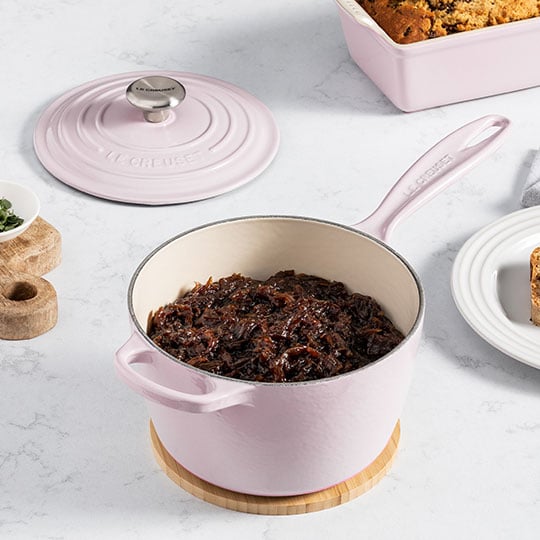
Caramelized
Arguably the most delicious way to prepare this genre of vegetables, caramelized alliums are meltingly tender, with a luscious mouthfeel and a perfect balance of savory and sweet. Whether caramelizing in butter, olive oil or any other flavorful fat, low and slow is the way to produce the proper texture and flavor. This method works well on heartier, sliced alliums like onions, shallots, leeks, and ramps as well as whole cloves of garlic. Once caramelized, they can be used in everything from soups, such as in the classic French Onion Soup, to burgers, pizza and even in our recipe for a tangy Shallot Jam.
Get the Recipe: Balsamic Shallot Jam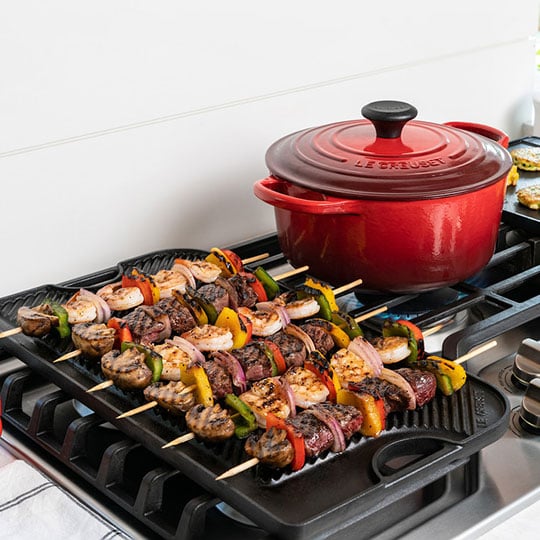
Grilled
When it’s grilling season, charbroiled alliums are a natural addition to every meal. Longer spring onions, scallions, leeks and ramps can all be placed whole on the grill, perpendicular to the grates, picking up charred marks on the outside with a juicy, tender interior. For red onion and sweet Vidalia’s, thick slices are best so they don’t fall through. And of course, you can always grill inside with a sturdy Grill Pan, with no danger of your grilled alliums escaping.
Get the Recipe: Citrus Grilled Pork Chops with Aleppo Pepper
Roasted
Roasting is a simple method that brings out the natural sweetness of alliums with just a bit of olive oil, seasoning and high heat. Whole or halved onions do particularly well when roasted, resulting in a caramelized, crispy exterior with tender, juicy layers inside. They can be pan-roasted on the stovetop, as is the case with halved shallots in our Shallot Tarte Tatin, or more typically roasted in the oven either solo or combined with other meat and veggies to form a complete meal.
Get the Recipe: Ginger Scallion Fish Ssäm with Charred Onions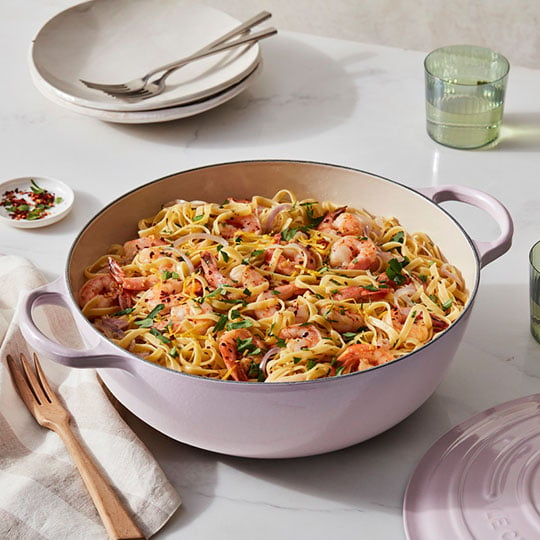
Sautéed
It would be impossible to cover every single example in which an allium is sautéed because they are an integral component to so many recipes. Almost every edible allium can be prepared in this way with delicious results. This classic preparation involves cooking the food in a small amount of oil or butter over relatively high heat in a skillet or sauté pan. Sautéing is often also the first step in many recipes, from soups and stews to sauces and casseroles. Alliums truly are the building blocks to flavor in so many cuisines.
Get the Recipe: Shallot Shrimp ScampiAllium Preparation Guide
Alliums are the chameleons of the vegetable world. Sharp, pungent and even spicy when raw, they can be transformed into meltingly sweet and savory additions to soups, tarts and breads. Before cooking, make sure to get rid of any excess grit or dirt, since these vegetables grow directly in the ground and trap dirt between their papery layers.
When preparing alliums, a sharp knife is crucial to cut cleanly through the delicate layers without smashing. A precise cut can help prevent the sulfur in the plant’s cells from being released into the air, where they then make you tear up. That sulfur is also what gives alliums their distinctive taste and odor. So while all alliums can be somewhat interchangeable in a recipe, there are subtle differences in texture, flavor and moisture that favor one preparation over another. Check out this handy chart for the best ways to prepare these versatile vegetables.
